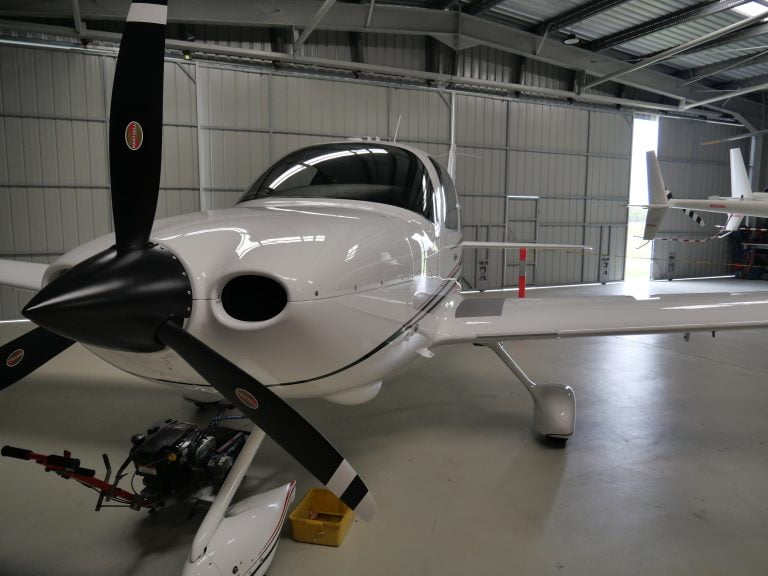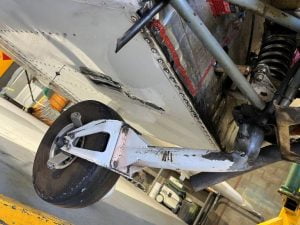I have now owned and operated a flight school for over 10 years and in that time I have used both metal and composite training aircraft. I have had experience in maintaining and using both types for ab-initio and navigation training.
Before I go into more detail on what I personally prefer, let’s firstly look at the benefits and disadvantages of composite and metal aircraft.
Metal airframes
Metal airframes are generally constructed out of aluminium and consist of an internal metal frame covered in a metal skin that is usually riveted to the frame.
Benefits of aircraft constructed from metal
- Low cost and easily available materials
- Proven durability
- Can be stored outside for long periods of time
- Fairly simple manufacturing and repairs
- Easy to inspect
Some of the disadvantages are:
- Once the skin is damaged it is hard to bend back into place and often needs to be repaired.
- Corrosion can affect aluminium materials over time
- Prone to fatigue and cracking over long periods of time
- Metal airframes can also interfere with compasses and radio communications
Composite airframes
Many modern aircraft are now designed and manufactured with composites. A composite is any material made from numerous materials. For aviation, this normally means fibreglass, carbon and/or kevlar. These materials are normally mixed with a plastic resin and bonded together in layers to create a strong structure. Composite factory-built aircraft are built with a mould. The composite material is layered with resin into the mould then cured (hardened) to create the shape of the aircraft piece.
Composite airframes generally have high tensile strength and are usually lighter than a metal aircraft. Composite construction allows more freedom compared to aluminium, when it comes to designing exotic modern shapes. Composite aircraft don’t often require any internal frame as the shell of the aircraft is composed of the load bearing structure.
Advantages of composite aircraft
- High tensile strength
- Resistance to fatigue and corrosion
- No frame and less weight than metal aircraft (up to a 50% saving in weight)
- Easy to mass produce and assemble
Disadvantages of composite aircraft
- Expensive to manufacture compared to metal
- Material can be hard to inspect for damage
- Can have UV damage if left outdoors for prolonged periods of time
- Not as easy to repair minor damage compared to metal and requires specialised knowledge of composites
- Delamination can occur over time or with contact with certain chemicals
It all comes down to personal preference
As you can see, there are benefits and disadvantages to both types. When it comes to flying, I enjoy flying in both types. I love the look and feel of composite aircraft, however I appreciate the basic construction and ease of repair of metal aircraft.
My personal preference is to have metal aircraft in a flight school environment. I currently have an all-metal fleet. While we love being able to fly over the spectacular Caloundra coastline, the downside of being located near the ocean is having corrosion issues. We spend a lot of money on corrosion prevention.
The biggest benefit of metal aircraft is that unlike with composite, small repairs are easily fixed by most licensed aircraft maintenance engineers. One morning recently, we had a private hirer do a hard landing, snap the nosewheel and damage the propeller. By that afternoon, we had organised a replacement prop, nosewheel and engine mount, and with the help of AMS next door to us, the plane was back in the air within just five working days. If this was a composite aircraft, it would have taken weeks to repair.


